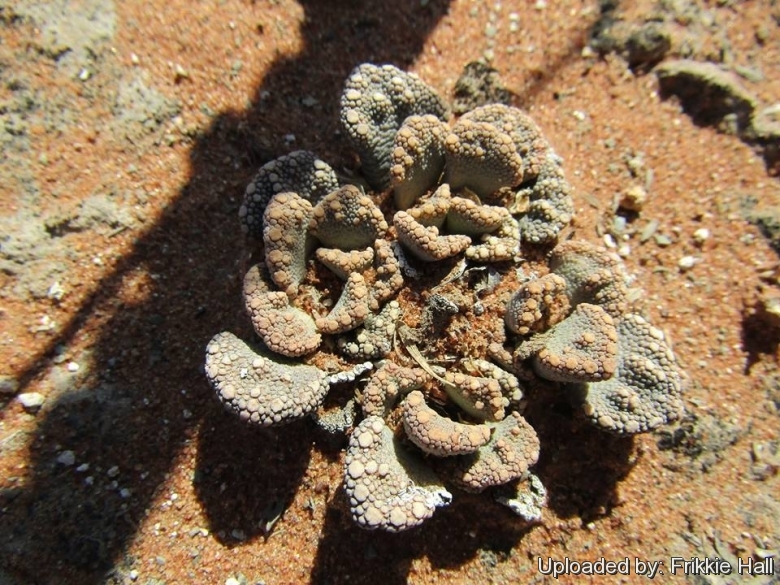
Titanopsis calcarea Photo by: Frikkie Hall
In habitat.
Origin and Habitat: South Africa (Bushmanland, Upper Karoo)
Habitat: With a white incrustation to the leaves, it is confined to limestone outcrops. This is probably a rare case of protective coloration in plants akin to that found in the animal kingdom and these plants blend in well with their surroundings.
Synonyms:
See all synonyms of Titanopsis calcarea
back
Accepted name in llifle Database:Titanopsis calcarea (Marloth) SchwantesZ. Sukkulentenk. ii. 178 (1926)Synonymy: 4
Cultivars
(2):
back
Description: Mat forming succulent with basal rosettes up to 10 cm wide.
Leaves: Up to 2.5 cm long with truncate tip. This species has variously coloured leaves, usually grey or blue-green, densely covered at the apex with whitish, creamy grey, ochre, red or bluish rough tubercles (depending on plant's origin).
Flowers: 2 cm orange-yellow flowers in late fall and winter.
Subspecies, varieties, forms and cultivars of plants belonging to the Titanopsis calcarea group
Notes: The Genus Titanopsis comprises three to six species, depending on botanists' opinions. Some botanists have now lumped Titanopsis lüderitzii and Titanopsis primosiiSN|13463]]SN|13463]] in with Titanopsis schwantesii.
The species list for Titanopsis is considered to be Titanopsis calcareaSN|12601]]SN|12599]], Titanopsis fulleriSN|12599]]SN|12601]] ( = calcarea ), Titanopsis hugo-schlecteri, Titanopsis lüderitzii ( = schwantesii ), Titanopsis primosiiSN|13463]]SN|13463]] ( = schwantesii ), Titanopsis schwantesii
Bibliography: Major references and further lectures
1) Heidrun E. K. Hartmann “Aizoaceae F – Z” Springer, 2002
2) James Cullen, Sabina G. Knees, H. Suzanne Cubey “The European Garden Flora Flowering Plants: A Manual for the Identification of Plants Cultivated in Europe, Both Out-of-Doors and Under Glass - Casuarinaceae to Aristolochiaceae” Cambridge University Press, 11/ago/2011
3) Hermann Jacobsen, Vera Higgins “Succulent Plants: Description, Cultivation and Uses of Succulent Plants, Other Than Cacti” Williams and Norgate, Limited, 1935
4) Jacobsen. “Handbook of succulent plants” 1960
5) H. Herre “The genera of the Mesembryanthemaceae” Tafelberg-Uitgewers Beperk, 1971
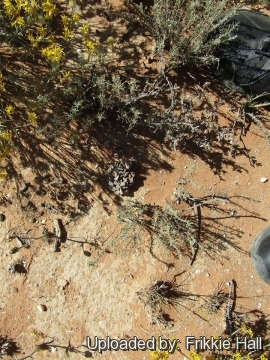 In habita among other vegetation. Photo by: Frikkie Hall
In habita among other vegetation. Photo by: Frikkie Hall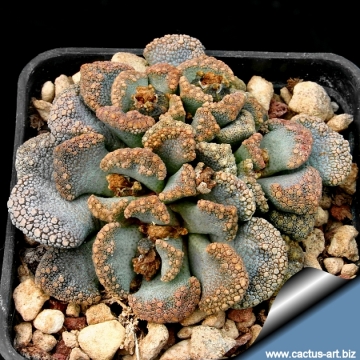 MG 1870.06 - 35 Km NW Brandvlei (Outstanding blue form) Photo by: Cactus Art
MG 1870.06 - 35 Km NW Brandvlei (Outstanding blue form) Photo by: Cactus Art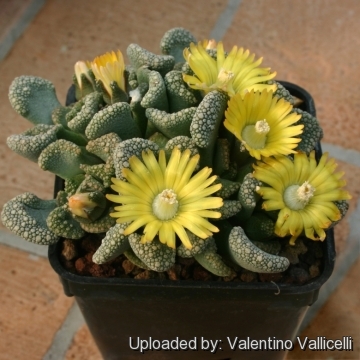 MG 1870.06 - 35 Km NW Brandvlei (outstanding blue form) Photo by: Valentino Vallicelli
MG 1870.06 - 35 Km NW Brandvlei (outstanding blue form) Photo by: Valentino Vallicelli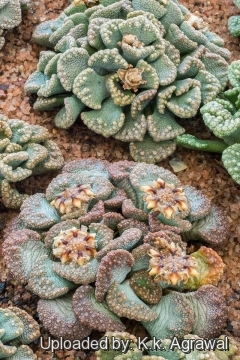 Open capsules exposing the seeds after rain. Photo by: K.k. Agrawal
Open capsules exposing the seeds after rain. Photo by: K.k. Agrawal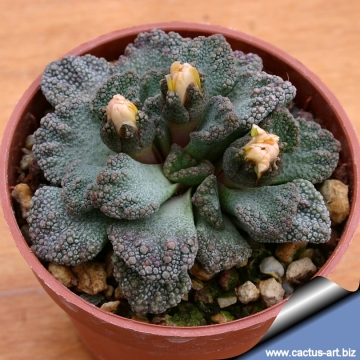 MG 1870.15 Oorlosghoek ( beautifully ochre) Photo by: Cactus Art
MG 1870.15 Oorlosghoek ( beautifully ochre) Photo by: Cactus Art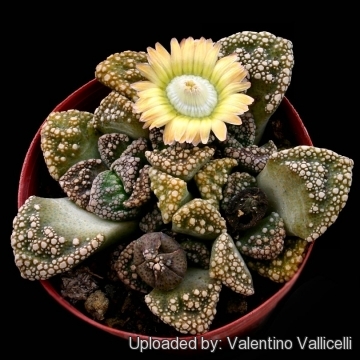 - This species is a truly impressive living rock, with unique leaves with very colourful "warts" on their ends, making them blend well in the rocky areas of South Africa where they are native. They are quite variable, depending on origin, clone and sun exposure. Photo by: Valentino Vallicelli
- This species is a truly impressive living rock, with unique leaves with very colourful "warts" on their ends, making them blend well in the rocky areas of South Africa where they are native. They are quite variable, depending on origin, clone and sun exposure. Photo by: Valentino Vallicelli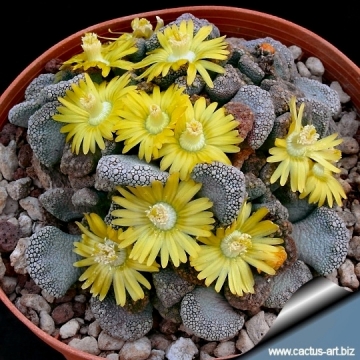 MG 1870.061Campbell, W Kimberley (Very grey) Photo by: Cactus Art
MG 1870.061Campbell, W Kimberley (Very grey) Photo by: Cactus Art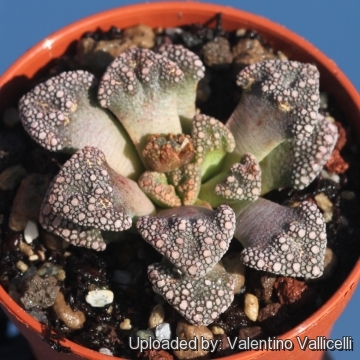 SB1311 Kimberley, Griekwaland, Cape Province, South Africa Photo by: Valentino Vallicelli
SB1311 Kimberley, Griekwaland, Cape Province, South Africa Photo by: Valentino VallicelliCultivation and Propagation: This species is easy to grow and clumps readily, forming a beautiful succulent mat. Needs moderate water when growing in late fall and early spring. Keep somewhat dry the rest of the time. Like all living rocks, they thrive in porous soils with excellent drainage. It can tolerates high heat and heavy frost (hardy to -10° C). It is a very rewarding succulent, and can be cultivated in desert gardens in warm climates or in greenhouses or windowsills in the home. Enjoys bright shade in summer and full sun in the other seasons.
Propagation: They grow quickly from seed or by division of larger clumps.
Your Photos
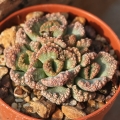
by Valentino Vallicelli
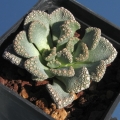
by Valentino Vallicelli

by Valentino Vallicelli
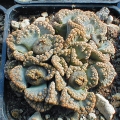
by Valentino Vallicelli
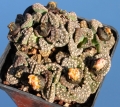
by Valentino Vallicelli























